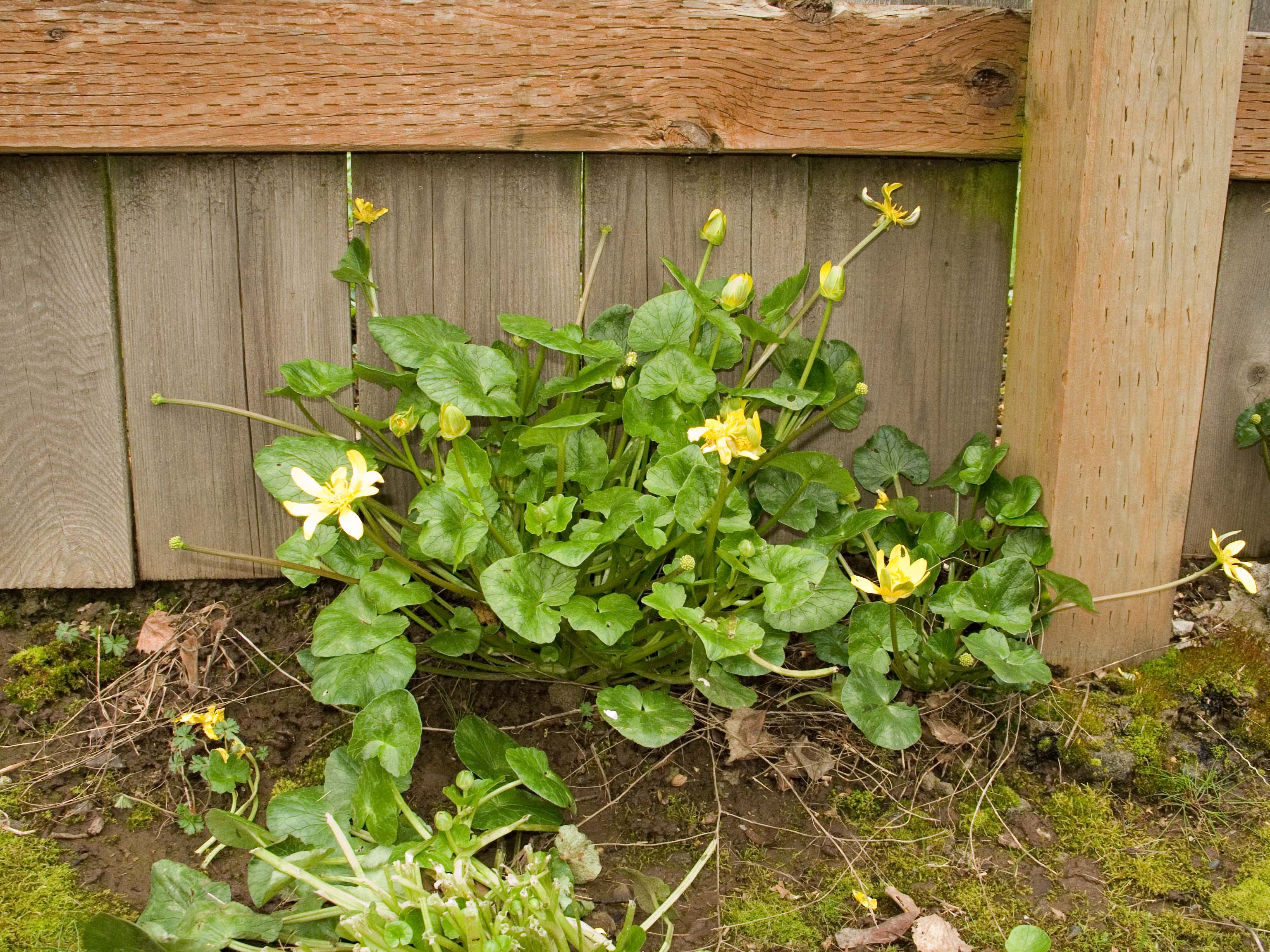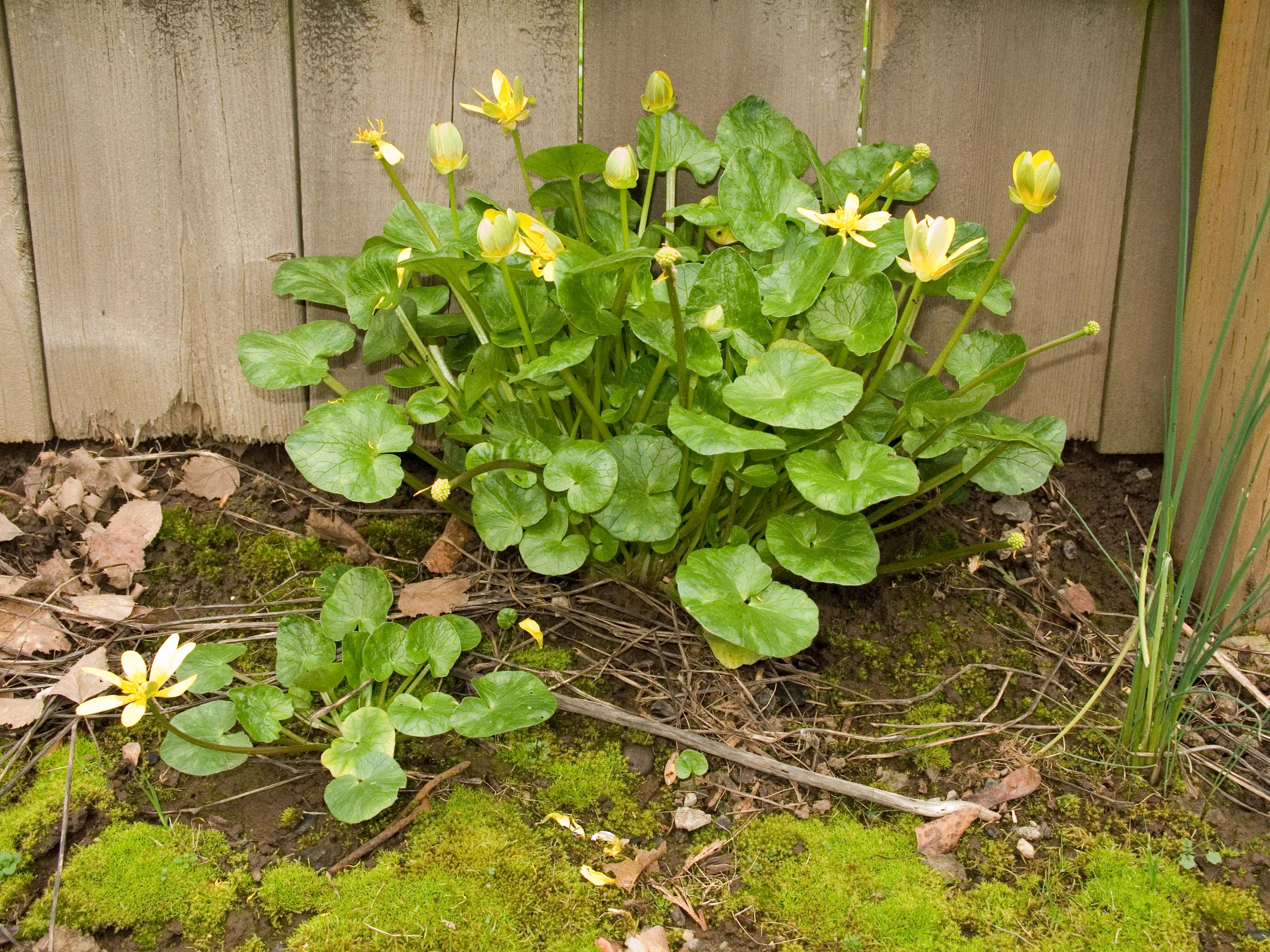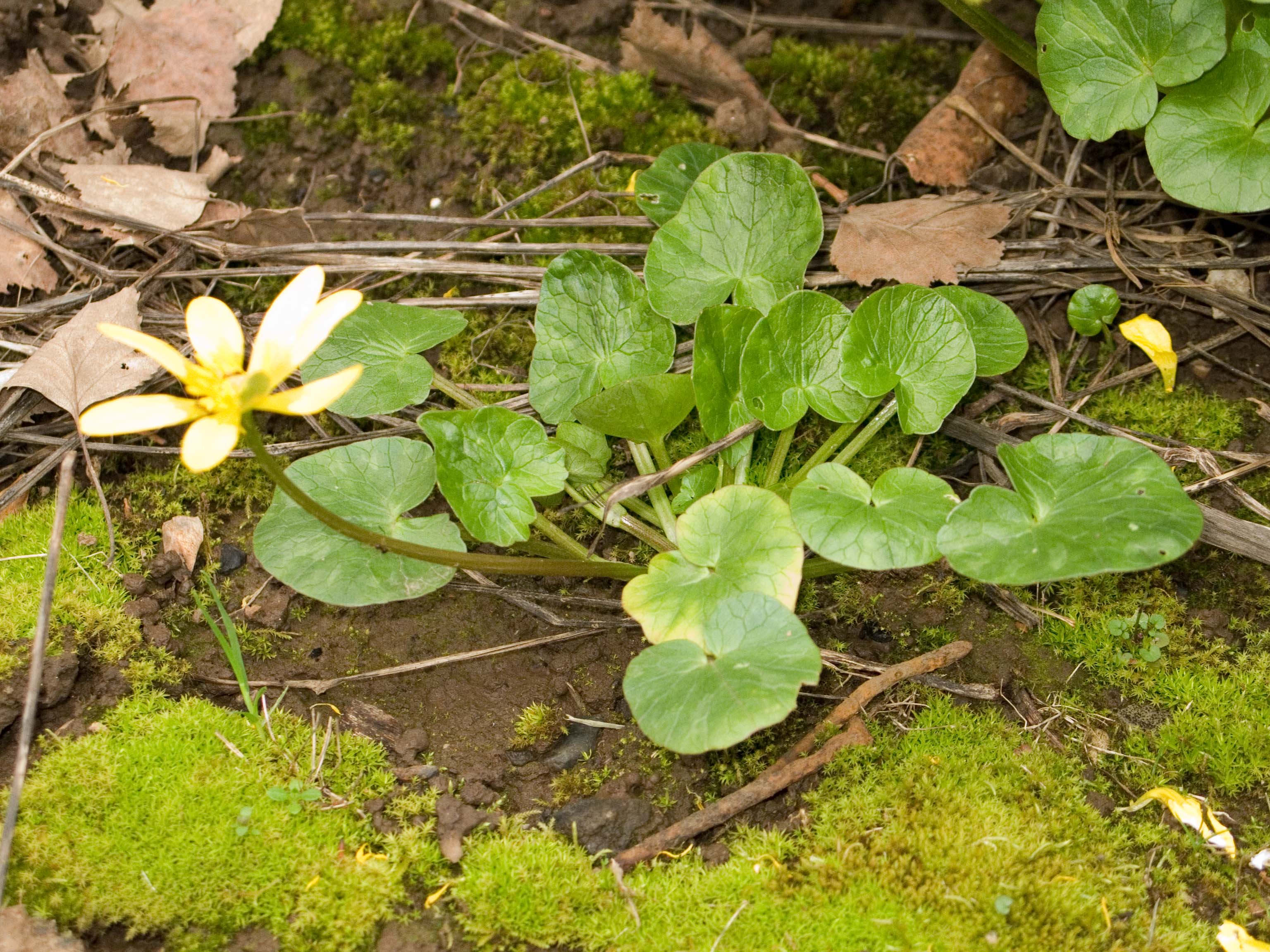Lesser Celandine (Ficaria verna) on Feb 25, 2010
Submitter does not have a specimen
EDRR Status: Local expert notified
Description of specimen
A few days after my neighbor told me about a pretty yellow flower blooming in her yard, the lesser celandine alert came out. I visited her again today (Feb, 25, 2010) and asked if I could take a look at it. Then I asked if I could photograph it. There is a loose row of it along her fence line at the back of her yard at 1375 Elkay Drive. I think some might be starting to move perpendicular to the road in the hedge line on her west boundary. I peered through her fence and saw a huge plot of it. This plot is about 30 x 30 feet or larger. It is also coming through the grassy area in some spots. It is a garden area. I called the homeowners on Beebe and they said that the plant dies back and they use the area as a vegetable garden. She said she thought that they obtained some starter plants from a relative who lives in Lincoln City.
She is interested in removing the plants if they are, indeed, lesser celandine, but she does not want to use herbicides as she has an organic garden. She is also willing to accept help from outside to get rid of an invasive plant. All of the homeowners invovled are elderly (the oldest is 97).





I am not an expert, so I want to be sure about my ID in this case, The spreading habit of this plant seems like l. celandine to me. The garden plot that I could see through the fence is totally covered with it.
Reporter
Feb. 25, 2010, 11:33 a.m.
Thanks so much for submitting this report. It sounds like you have discovered quite the infestation, and control may be tricky if herbicides are not in the toolbox. I have heard people suggest that complete soil removal is the only way to get rid of this species since it is impossible to find and remove the many bulbet this species creates. I need to ask around to see if there are any resources available to help you control this population. At this point I'd suggest that you notify all the neighbors and do your best to prevent it from spreading any further. You can prevent spread by not giving the plant to other gardeners, cut back flowers so it cannot form the tiny bulbs, and remove (dig out) outlier populations. Again, I will look into other options and see if I can drum up more help, and let you know. Thanks again for submitting the report, and keep up the GREAT work! I really appreciated the previous reports you sent. Please keep them coming!
Thank you!
Tania
Tania Siemens
Western Oregon EDRR Coordinator
Early Detection and Rapid Response to Invasive Species
The Nature Conservancy
tania.siemens@oregonstate.edu
541-914-0701
Tania Siemens
March 1, 2010, 6:06 a.m.